
How to Use Raspberry Pi 5: Examples, Pinouts, and Specs
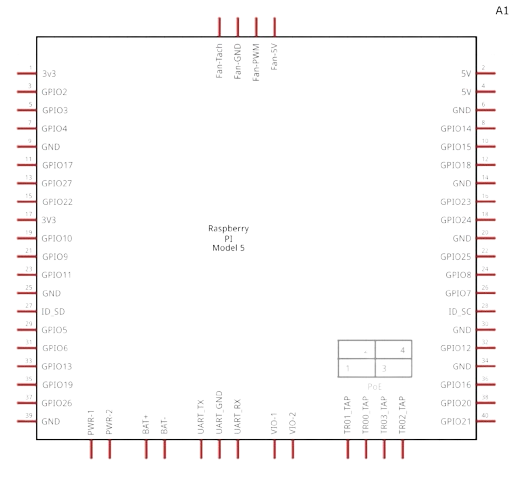
 Design with Raspberry Pi 5 in Cirkit Designer
Design with Raspberry Pi 5 in Cirkit DesignerIntroduction
The Raspberry Pi 5 is a compact, affordable single-board computer designed for a wide range of applications. It features a powerful quad-core processor, multiple USB ports, HDMI output, and GPIO pins, making it a versatile tool for programming, robotics, IoT, and other electronic projects. Its small form factor and robust capabilities make it an excellent choice for both beginners and experienced developers.
Explore Projects Built with Raspberry Pi 5
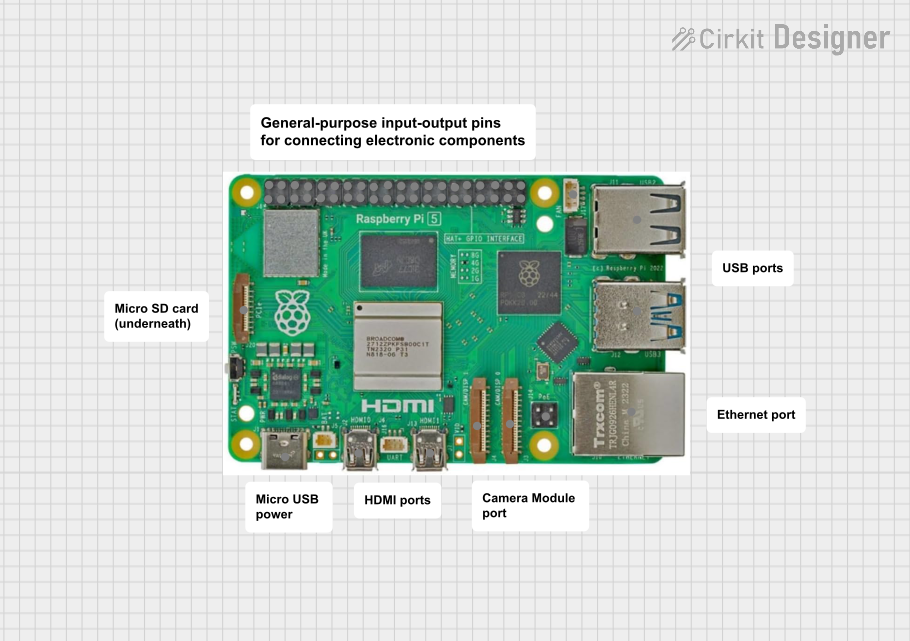
 Open Project in Cirkit Designer
Open Project in Cirkit Designer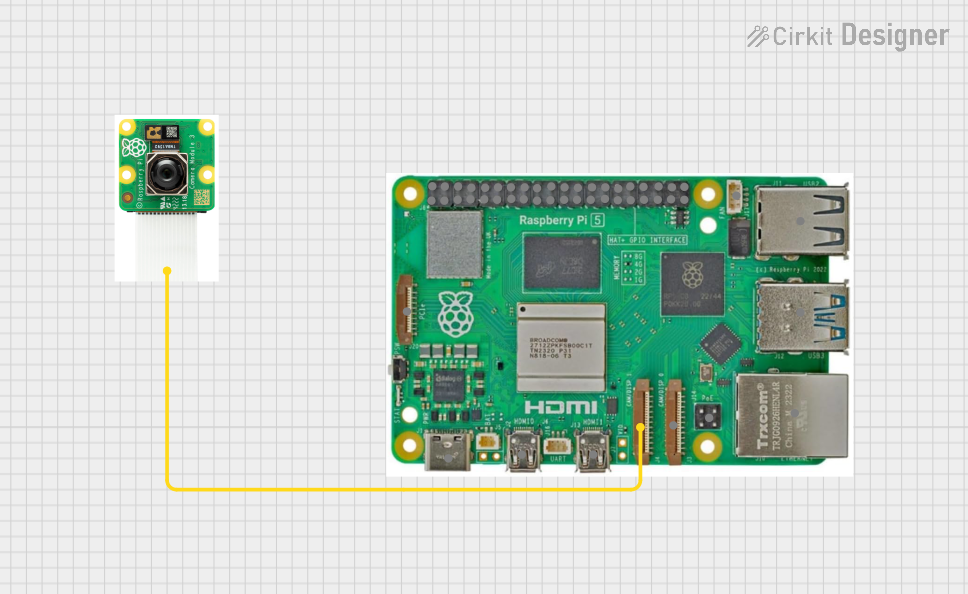
 Open Project in Cirkit Designer
Open Project in Cirkit Designer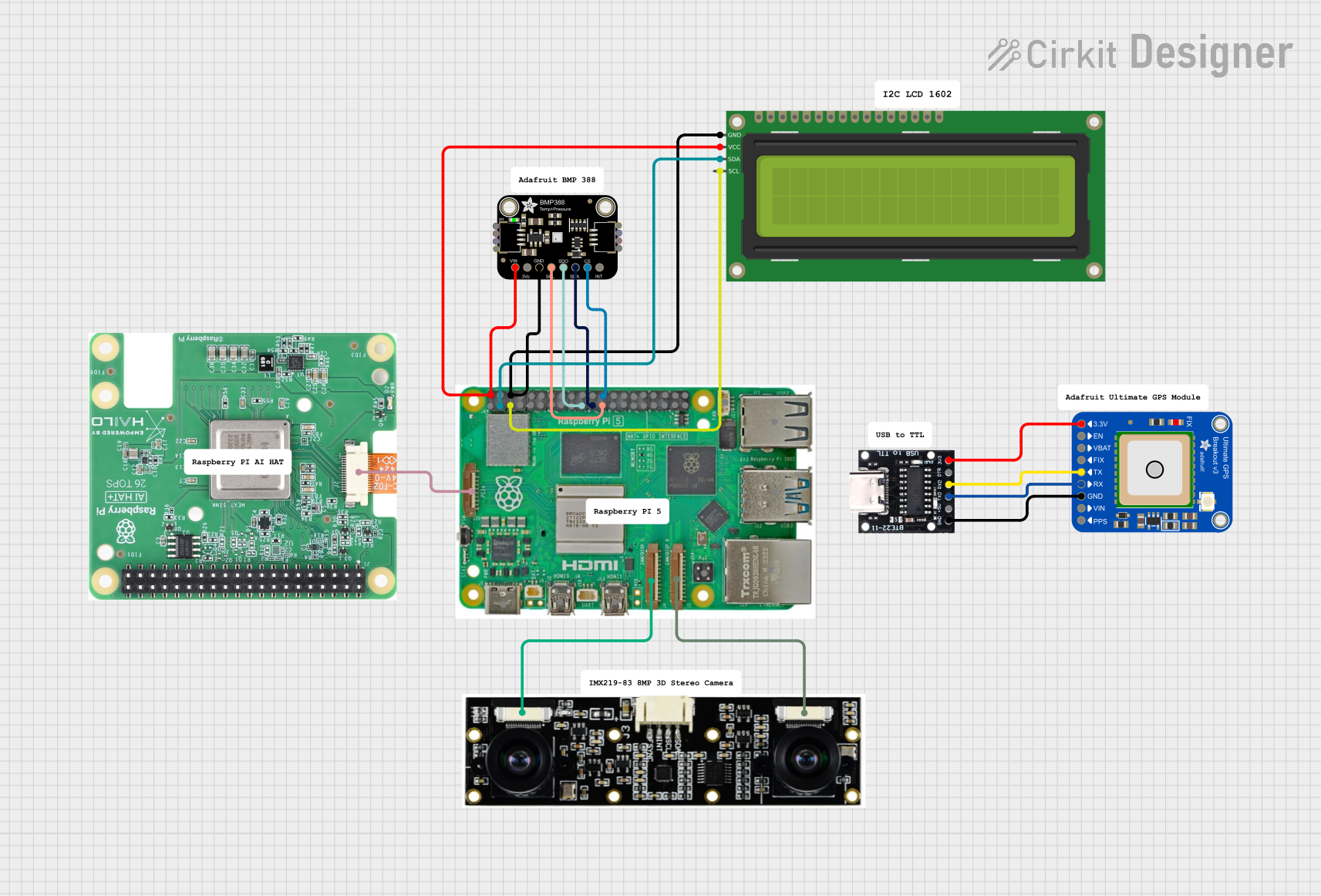
 Open Project in Cirkit Designer
Open Project in Cirkit Designer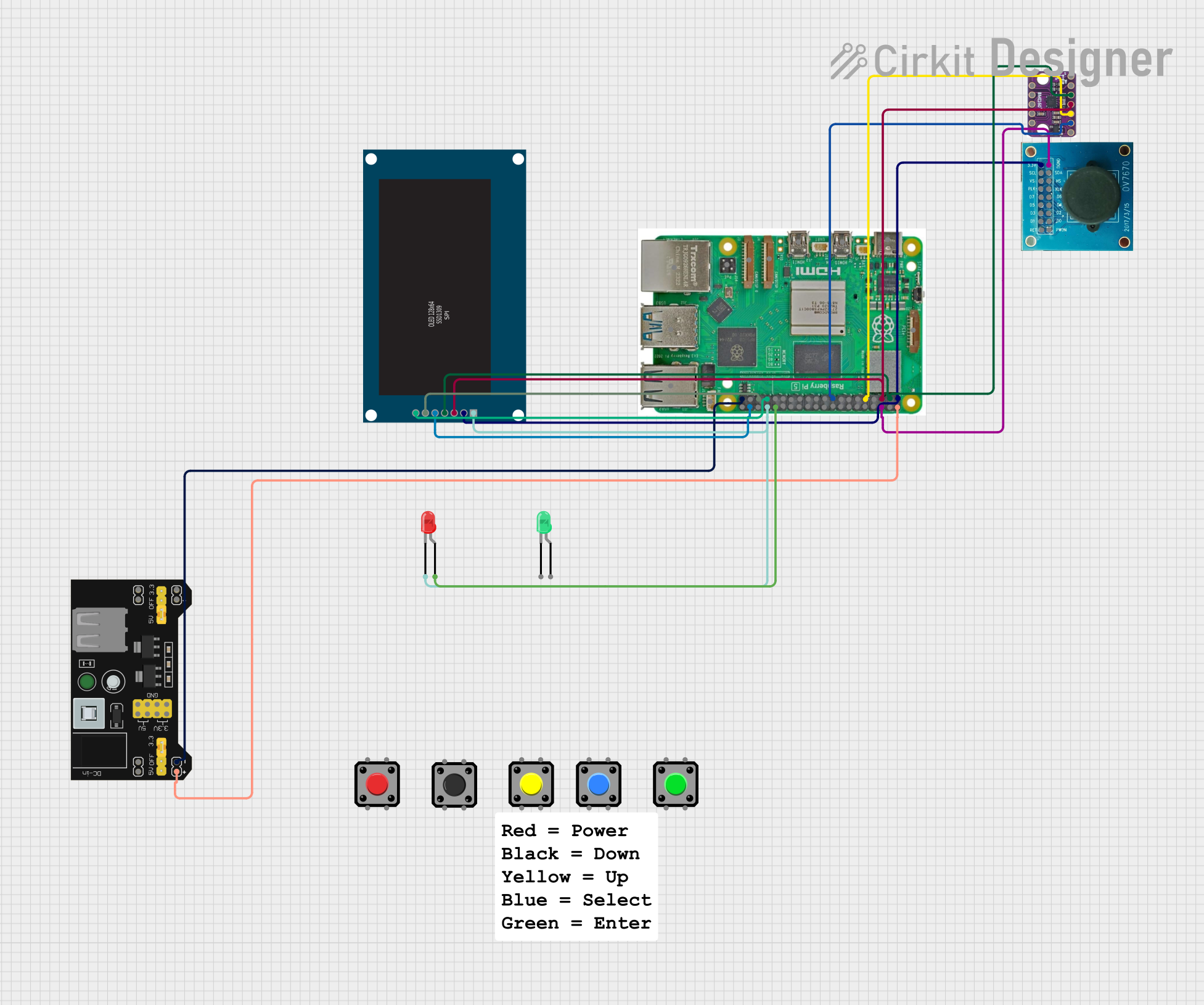
 Open Project in Cirkit Designer
Open Project in Cirkit DesignerExplore Projects Built with Raspberry Pi 5

 Open Project in Cirkit Designer
Open Project in Cirkit Designer
 Open Project in Cirkit Designer
Open Project in Cirkit Designer
 Open Project in Cirkit Designer
Open Project in Cirkit Designer
 Open Project in Cirkit Designer
Open Project in Cirkit DesignerCommon Applications and Use Cases
- Programming and Education: Ideal for learning programming languages like Python, C++, and Java.
- IoT Projects: Used in smart home systems, environmental monitoring, and connected devices.
- Robotics: Serves as the brain for robots, enabling control and automation.
- Media Centers: Can be configured as a media server or streaming device.
- Prototyping: Perfect for testing and developing electronic circuits and systems.
Technical Specifications
The Raspberry Pi 5 offers a range of features and capabilities that make it a powerful and flexible platform for various projects.
Key Technical Details
- Processor: Quad-core ARM Cortex-A76, 2.4 GHz
- RAM: 4GB or 8GB LPDDR4X (depending on the model)
- Storage: MicroSD card slot, support for external SSDs via USB 3.0
- Connectivity:
- 2 × USB 3.0 ports
- 2 × USB 2.0 ports
- Gigabit Ethernet
- Wi-Fi 6 (802.11ax) and Bluetooth 5.2
- Video Output: Dual micro-HDMI ports, supporting up to 4K resolution at 60Hz
- GPIO Pins: 40-pin header for interfacing with external components
- Power Supply: USB-C, 5V/3A
- Dimensions: 85.6mm × 56.5mm × 17mm
Pin Configuration and Descriptions
The Raspberry Pi 5 features a 40-pin GPIO header, which is used to interface with external components. Below is the pinout description:
| Pin Number | Pin Name | Description |
|---|---|---|
| 1 | 3.3V Power | Provides 3.3V power output |
| 2 | 5V Power | Provides 5V power output |
| 3 | GPIO2 (SDA1) | I2C Data Line |
| 4 | 5V Power | Provides 5V power output |
| 5 | GPIO3 (SCL1) | I2C Clock Line |
| 6 | Ground | Ground |
| 7 | GPIO4 | General-purpose I/O |
| 8 | GPIO14 (TXD) | UART Transmit |
| 9 | Ground | Ground |
| 10 | GPIO15 (RXD) | UART Receive |
| ... | ... | ... |
For the full GPIO pinout, refer to the official Raspberry Pi documentation.
Usage Instructions
How to Use the Raspberry Pi 5 in a Circuit
Powering the Raspberry Pi:
- Use a 5V/3A USB-C power adapter to power the Raspberry Pi 5.
- Ensure the power supply is stable to avoid damage to the board.
Connecting Peripherals:
- Attach a monitor via the micro-HDMI ports.
- Connect a keyboard and mouse to the USB ports.
- Insert a microSD card with the Raspberry Pi OS installed into the microSD slot.
Using GPIO Pins:
- Use the GPIO pins to connect sensors, LEDs, motors, and other components.
- Be cautious about voltage levels; the GPIO pins operate at 3.3V logic.
Networking:
- Connect to the internet via Ethernet or Wi-Fi for software updates and remote access.
Important Considerations and Best Practices
- Static Electricity: Handle the Raspberry Pi 5 with care to avoid static discharge, which can damage the board.
- Cooling: Consider using a heatsink or fan for cooling during intensive tasks.
- Software Updates: Regularly update the Raspberry Pi OS to ensure security and compatibility.
- GPIO Safety: Avoid shorting GPIO pins or exceeding their voltage/current limits.
Example: Blinking an LED with Raspberry Pi 5
Below is an example of how to blink an LED using the GPIO pins and Python:
Import the GPIO library and time module
import RPi.GPIO as GPIO import time
Set the GPIO mode to BCM (Broadcom pin numbering)
GPIO.setmode(GPIO.BCM)
Define the GPIO pin connected to the LED
LED_PIN = 18
Set up the LED pin as an output
GPIO.setup(LED_PIN, GPIO.OUT)
Blink the LED in a loop
try: while True: GPIO.output(LED_PIN, GPIO.HIGH) # Turn the LED on time.sleep(1) # Wait for 1 second GPIO.output(LED_PIN, GPIO.LOW) # Turn the LED off time.sleep(1) # Wait for 1 second except KeyboardInterrupt: # Clean up GPIO settings when the program is interrupted GPIO.cleanup()
Notes:
- Connect the LED to GPIO18 (pin 12) with a current-limiting resistor (e.g., 330Ω).
- Use a common ground connection between the Raspberry Pi and the LED circuit.
Troubleshooting and FAQs
Common Issues and Solutions
The Raspberry Pi does not boot:
- Ensure the microSD card is properly inserted and contains a valid OS image.
- Check the power supply for sufficient voltage and current.
No display on the monitor:
- Verify the HDMI cable connection and ensure the monitor is powered on.
- Check the Raspberry Pi's configuration file (
config.txt) for display settings.
GPIO pins not working:
- Ensure the correct GPIO pin numbering mode (BCM or BOARD) is used in your code.
- Check for loose connections or damaged components.
Overheating:
- Use a heatsink or fan to improve cooling.
- Avoid running intensive tasks for extended periods without proper ventilation.
FAQs
Can I power the Raspberry Pi 5 via GPIO pins?
- Yes, you can power it via the 5V and GND pins, but this is not recommended for beginners due to the risk of damage.
What operating systems are supported?
- The Raspberry Pi 5 supports Raspberry Pi OS, Ubuntu, and other Linux-based distributions.
Can I use the Raspberry Pi 5 for AI/ML projects?
- Yes, the Raspberry Pi 5 is powerful enough for lightweight AI/ML tasks, especially when paired with external accelerators like the Google Coral USB.
By following this documentation, you can effectively use the Raspberry Pi 5 for a variety of projects and troubleshoot common issues with ease.